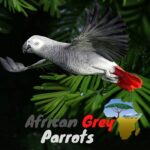
Parrot rescue, The Congo grey parrot, and Timneh parrot again cry for help. The illegal exploitation, which has long characterized this bird, seems to resurface again, Congo African Grey Parrot illicit traffic.
African Grey parrots, in cages, waiting to be sold.
How many African grey parrots are left in the world
A year and a half ago, just in the specific case of the DRC, the species went from the license to exploit according to a required quota to the total ban on exploitation.
CITES (Convention on International Trade in Endangered Species of Wild Fauna and Flora)multilateral treaty to protect endangered plants and animals, with its member states, has taken this decision, with the aim of coming to the rescue of the species.
While we thought grey parrot, at the end of its pain, this decision supposed to help him until further notice, do not seem to have changed much in the market.
African grey parrot poaching: wild animals cruelly snatched from their homes
SOURCE:World Animal Protection
Its marketing, which normally had to be in a stage of total cessation, seems to continue tirelessly in the capital Kinshasa. If, in the city center, you can see sellers who operate without having a single document of exploitation for commercial purposes, a little further west of the city, the catches, as well as the sales to exporters, continue nonstop.
At the center of the illegal exploitation of the African Grey Parrot, all eyes seem to turn on the operators. All point the finger, because to the question of knowing the how and the why of this traffic yet prohibited, a single answer on the lips, “it is the operators”.
This is also one of the statements of the Director-General of the Congolese Institute for the Conservation of Nature (ICCN), Doctor COSMA WILUNGULA, “it is the abuses of our exploiting friends who use traffic and fraud.
The annual quota of 5,000 Congo African Grey Parrot illicit traffic before the passage to the appendix one of the CITES signifying the formal prohibition of exploitation was not respected because of the abuses of the operators “, he confides.
On the basis of the ban, numerous reports of fraud and illicit trafficking pointing the finger not only at the operators, but also at the CITES management body of the DRC, the Directorate of Nature Conservation (DCN).
Cléo MASHINI, President of the global network for monitoring international trade in flora and fauna, TRAFFIC, talks to us about the obvious facts that demonstrate this. ‘
“The different States Parties periodically report and just by compiling these reports, we realize that they have declared to have received on their territory a number x of Congo African Grey Parrot illicit traffic which goes beyond the quota of the DRC just by examining the various reports, we can make this observation there without it being necessary to make investigations ” he explained.
Parrots rescue in Florida
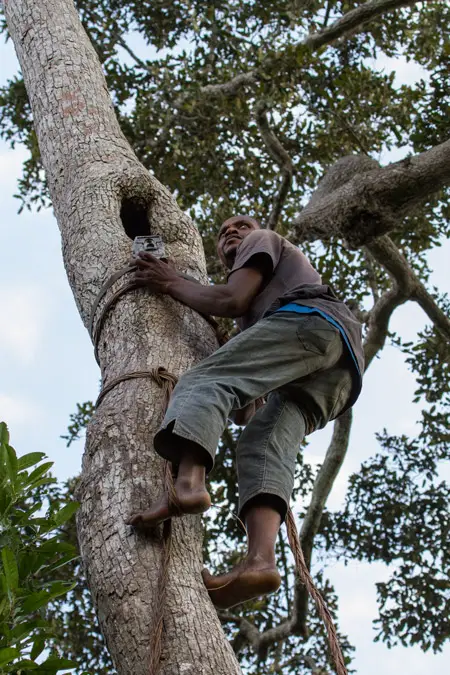
CITES (Convention on International Trade in Endangered Species of Wild Fauna and Flora) is an international agreement enabling states that have ratified it to legally regulate trade in endangered animal and plant species.
It was signed on March 3, 1973, by 21 countries and entered into force on July 1, 1975, and today includes more than 183 member countries including the DRC which joined it on July 20, 1976, with the aim of preserving its species.
When a species is listed on appendix three of CITES, this means that a member country has, on its own initiative, asked to regulate trade in order to protect them.
Their marketing requires authorization in this case. Annex two, on the other hand, places endangered species whose overexploitation and deregulated trade could seriously lead to their disappearance.
Their exploitation must be done according to a required annual quota. And appendix one, in which the Congo African Grey Parrot illicit traffic is currently found, and one that gives no possibility of exploitation. Here, the quota is zero.
Thus, following the CITES decision to list the grey parrot on this last appendix, the DRC tried to act to prevent the enforcement of the ban on its exploitation, by making a reservation as granted to it by the Convention.
Maître Jean Claude TSHILUMBAYI, Professor of international relations and public international law at the University of Kinshasa, explains the meaning of a reservation:
“A State which makes a reservation to an international Convention subtracts the intended provision from the synallagmatic obligations which l ‘engages with other States.
This provision falls asleep, and the state is under no obligation to enforce it. However, the other States parties must accept the reservation because, in custom, there is what is called the persistent objection of States to the reservation, with the consequence that despite the reservation made, other parties could manifest a refusal ”.
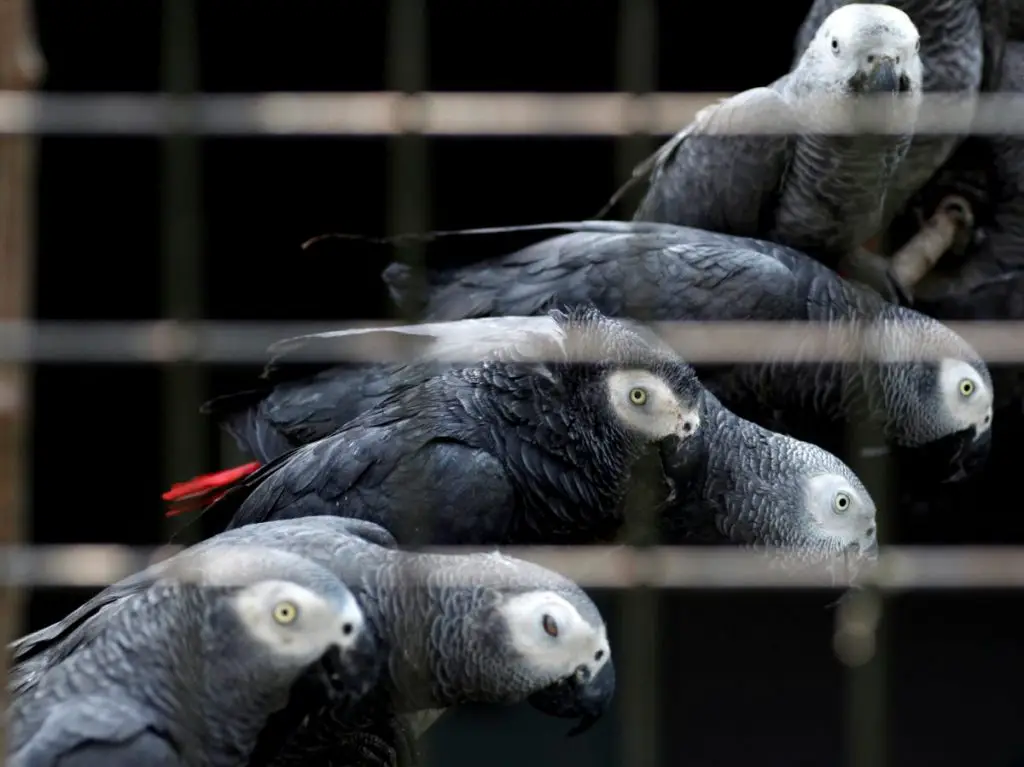
But if the DRC made a reservation in its time, unfortunately, today, it lapses. The member states of the Convention which had supported the DRC’s approach when this reservation was made, as the Convention wants, no longer support it.
The DG of ICCN, informs that the Arab Emirates and Saudi Arabia, the two countries which supported the reserve of the DRC, have just withdrawn. ‘’ For them, the DRC’s grey parrot trade is chaotic.
There is no country left that can buy it. The reserve lapses and in this case we are not entitled to subject any exploitation of grey parrots to illegal traffic, ”he declared.
According to the document entitled ” implementation of CITES by the COMIFAC countries ”, Central African Forests Commission, produced by the network for monitoring the trade in wild fauna and flora, TRAFFIC With the authorization of the CITES Secretariat in 2013, the DRC acceded to this Convention on 07/20/1976 and the Convention entered into force on 10/18/1976.
The country’s commitment was motivated by the need to preserve certain plant and animal species from the danger of extinction which would be due to their overexploitation in terms of international trade. Thus, by this accession followed by the ratification of the Convention, the DRC undertakes to exercise international trade in these species in accordance with the guideline of the convention.
In the midst of operators
Considered by all to be the bedrock of the illicit exploitation of Africa, we decided to approach them to find out more.
Wednesday, August 16, 2017, the sky is cloudy in this dry season, a sunless early afternoon in Kinshasa, the capital of the DRC, the climate is rather cool. It is exactly 1:13 pm when we arrive at the sellers of Congo African Grey Parrot illicit traffic.
Just opposite, a large asphalt road separates them from a wall of white color but which began to tend to grey, and whose almost endless length on both sides was difficult to estimate, and the height evaluated at nearly 3 m prevented us from seeing what he was hiding.
It’s the closing of Ndolo Aerodrome. Coincidence or strategy? We asked ourselves. No, it is not a coincidence because the Aerodrome of Ndolo is one of the exit routes, better, a bridge through which passes the most sought after wild animals, coming from the forests of the west of the country, before being exported.
Ndolo Airfield is one of the exit routes for grey parrots and a bridge through which the most sought-after wild animals come from the forests in the west of the country before being exported.
When we approach the sellers, we quickly see that grey parrots are not the only wild animals sold, we quickly spot a pangolin, two turtles, a turkey, monkeys, and many other species. Only, it was easily noticed that the largest space was reserved for the grey parrot.
There were more than a dozen. They constitute the very basis of trade. Reluctant at first, the sellers finally agreed to inform us about their business after long negotiations.
We buy the Congo African Grey Parrot illicit traffic with the help of the hunters who catch them from the forests in the interior of the country and then resell them to our customers at a price ranging from 50 to 100 US dollars.
The African Grey Parrot & the International Pet Trade
SOURCE:ParrotsWhispering
Our customers often buy them for domestic purposes, as a pet, “said one of the vendors, who tells us his name is Mayoka Nicodem, a man in his fifties, fair-skinned. He admits to having more than five years in this business which allows him to support his family.
This activity, which seems to be the only source of income for the seller, as he presented it to us, is carried out by him without him having a single document, or permit or for Congo African Grey Parrot illicit traffic, nor for the other wild animals, he sold, as required by law.
there are no legal documents for the sale of parrots. Environmental inspectors often come here but so much that these documents are expensive, around $ 200, we have not yet gathered the means to obtain them, “admits Mayoka Nicodemus
Grey parrots are sold in the open air along the road in Kinshasa.

Continuing the interview, we ask him if he knew that the exploitation of grey parrots was currently prohibited for export. In response, the seller claims that all the parrots that he and his associates met on the spot sell are only parrots bought from families who want to get rid of them.
the large operators who obtain 60 or more parrots are all known to environmental organizations. They have permits that the government itself has given them.
At the same instant, one of the associates yells us exactly this: “Madame! What kind of investigation are you doing there? You start asking too many questions. What does the question about documents do there? “.
Obliged to interrupt the interview given the discomfort it has produced, one of the sellers discreetly informs us about the identity of an operator, or rather of the one he called the largest operator of grey parrots in the city.
This discussion revealed that in the middle of the second half of the year, the sellers of this avenue, which is called “ heavy goods vehicle ”, located opposite the Ndolo Aerodrome, do not have any license to trade in wild animals. , and that, under the approving glance of the Environmental Inspectors who cannot pretend to ignore this reality.
Having received the information, on what the vendors of Ndolo called “the largest operator of grey parrots“, we decided to go there immediately. We are now in the Beau Vent district, in the commune of Lingala.
As the previous seller told us, the avenue in which the “big operator” lives is the same as that of one of the great singers of the city of Kinshasa. Although we didn’t have the exact address, it didn’t take us more than a minute to find the location.
Already, at the corner of the avenue, we could hear with our own ears the jabberings of the Congo African Grey Parrot illicit traffic.
We were not the only ones to hear them, passers-by, as well as the inhabitants of the avenue, are used to them, as delivered to us by the seller of cell phone credit around the corner who gave us the exact name of the ‘avenue, it is “the avenue of peace”.
It is exactly 2:40 pm when these cries of parrots bring us directly in front of this big black gate. After a few doors knock, a pretty young lady opens the gate for us and we asked her to meet the manager.
She lets us in and installs us. Once installed, two feelings arose simultaneously in us, we were both dazzled by what we heard and concerned about why we expected it, there, now,
in this period of total prohibition of the exploitation of Congo African Grey Parrot illicit traffic, this is, of course, the cries of parrots, the same cries that have attracted us so far. This time you could see exactly where they came from.

About 5 meters separated us from what looked like a cage measuring almost 2 square meters and 1 meter in height. Covered by a tarpaulin. Under this tarpaulin, you could hear gushes of parrots gushing out. Yes, that’s where those screams came from.
All around, this immense plot, you could see boxes squared by wires. Like the one, you find in wild bird markets. It was difficult for us to see what was inside, but the architecture already made us think of a bird shelter.
Suddenly, a gentleman, dressed in a combination like that put on by carpenters or even scrap dealers, appears out of nowhere, a few seconds later, we see another gentleman, slender with a fair complexion, dressed in a set of a navy blue jacket.
He’s the big operator. He sees us and asks us to wait a few minutes before welcoming us. And during this time, he gives some instructions to the gentleman in overalls who says to him “I have finished taking the measurements boss” – yes, this was a cage order which could be used to place the birds.
Then came to our turn to be received. When we entered his office, one of his phones rang. The ringtone catches our attention, it’s the parrot’s cry. Then another phone for the same ring. There, we realized that we were really dealing with a passionate person, giving pride of place to his job as an operator.
It looks like we are in the office of the company called BYART BIRDS import-export, a wild bird export company. We had confirmation of this when the man who until now we had appointed “the big operator”, who in reality would be called Mr. Martin Byart, gave us a business card with this information.
Refraining from making any comments about the exploitation of grey parrots, the operator still told us that the lot that we heard singing at home, was part of that of 1600 Congo African Grey Parrot illicit traffic whose licenses had already been issued before the ban.
Curious thing since this lot would have already been imported in 2016 according to what the document examining the proposal for amendment of Appendices 1 and 2 of the 17th session of the Conference of the Parties of CITES in Johannesburg, in South Africa says. South, 24/9 to 5/10 2016.
Wild African grey
Meet one of the operators’ suppliers
A few days later, exactly on Friday, September 8, 2017, we were going to the west of the capital, in the commune called Maluku where we met one of the largest suppliers of grey parrots to operators in Kinshasa, since Maluku is considered to be one of the operators’ large depots. This is where they come in large quantities to obtain parrots from the forests of the north and south-west of the country, using barges.
To date, not a single inventory on the number of grey parrots has been made since 1998.
Meet one of the operators’ suppliers
A few days later, exactly on Friday, September 8, 2017, we were going to the west of the capital, in the commune called Maluku where we met one of the largest suppliers of grey parrots to operators in Kinshasa, since Maluku is considered to be one of the operators’ large depots.
This is where they come in large quantities to obtain parrots from the forests of the north and south-west of the country, using barges.
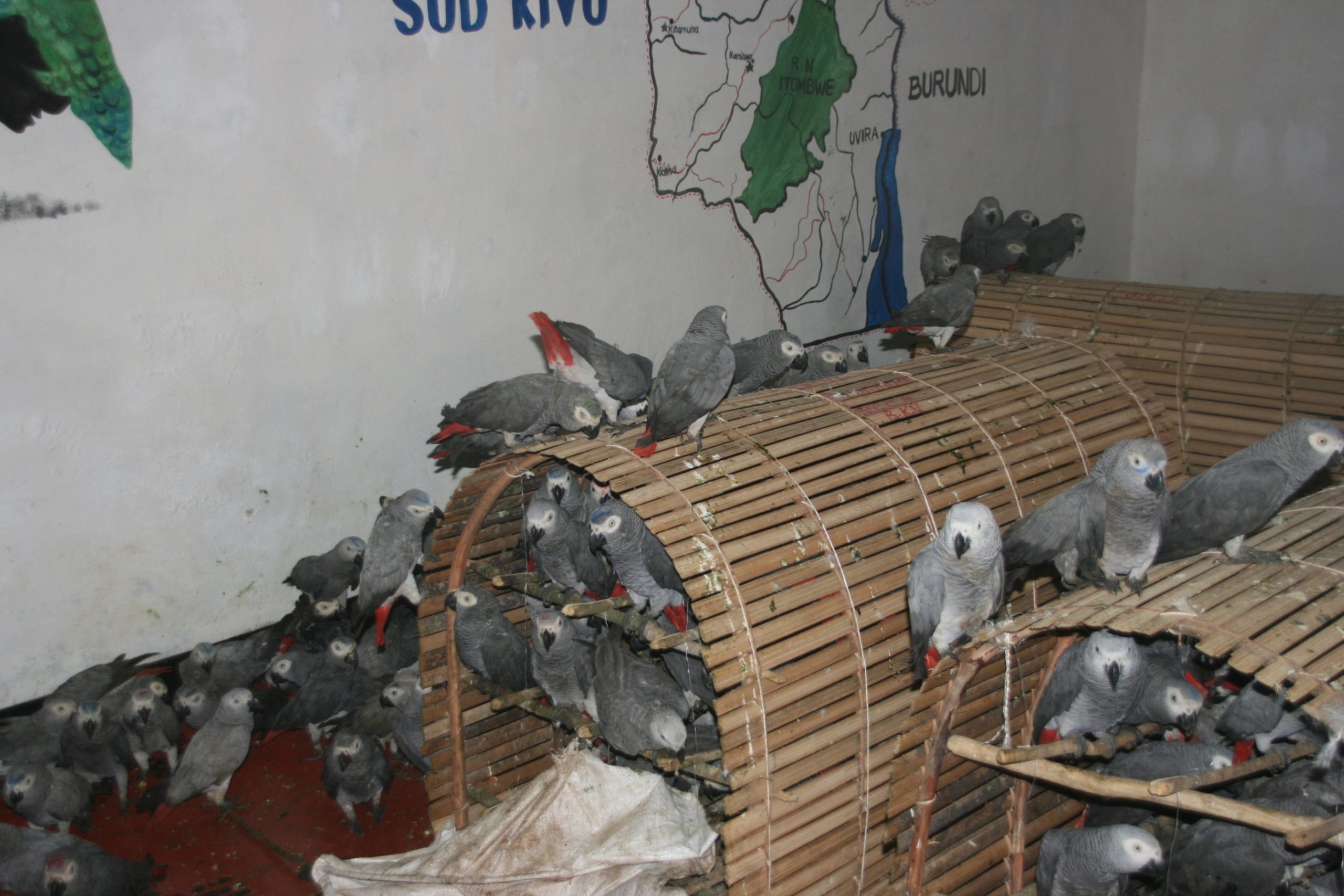
BOKULAKAYENDE BONGALA, a gentleman aged around 70, trader of grey parrots locality chief Inkene, yellow earth in Maluku, delivery of grey parrots to operators in Kinshasa, reveals to us that during this period of prohibition, requests for parrots by the operators, still remain present although the activity has become timid.
Today, the grey parrot trade in Gabon is going through difficult times. The operators do not have any document allowing them to exercise. But despite that, the demands are still there. ‘’ Specifies the delivery man.
Locals tell us that generally, in front of his home, at the time of delivery, the quantity of parrots is such that they are sometimes forced to fill the bodies of large trucks.
At the hotel where he used to receive his customers, you could also notice a good quantity of damaged corn. He admitted to us being the parrots’ meal for the next batch.
He explains here, the chain of operations for capture and export.
We have climbers who place plant glues on large trees. These glues are traps for parrots since, in contact with them, they can no longer fly.
As soon as they have captured them, I buy them at 10 or 20 dollars apiece and then resell them to operators in Kinshasa who generally place orders for me ranging from 100 to 200 parrots and they generally sell them abroad. ”
African Grey Parrot in wild
SOURCE:Cornell Lab of Ornithology
BOKULAKAYENDE BONGALA, admits to us all the same that to date, the market has significantly slowed down since the majority of its customers, who are mainly exporters, no longer have legal documents for export.
This interview, therefore, reveals to us that despite the suspension of exploitation of the grey parrot, the orders by the operators have not stopped. But for what purpose?
To understand how the operators proceed to export the grey parrots illegally, Joe KASONGO coordinator of the Congolese legal NGO Juristrale which works for the promotion of the environmental law in Africa speaks to us of a seizure of parrots grey that took place at Nd’jili Airport.
As part of a project that we carried out jointly with the airport control service, the Airport control body seized 11 cages of grey parrots that were already ready to be shipped in Iraq, cargo chartered in violation of the law because we had no quota which was already zero. Also, the cargo did not have proper documents to carry out this export. ”
If the operators persist in illegal trafficking, according to the coordinator of Juristrale, it is because there are several services that come into play.
‘’ Illegal trade takes place every day. It is in collusion with all services, even those outside the Airport. There are administrations, the army, etc. without being able to index this or that other service. ’’
Rescue a parrot

And he adds: “This trade brings a lot. And it’s easy to be able to bribe a person who works in such and such a checkpoint with a large sum of money to blindly pass cargo. When you go to the Airport you will see that there is increased porosity. You yourself will notice that there is no control. “
No inventory determines the grey parrot population in the DRC
The question that remains is also that of the estimate of the grey parrot population currently available in the DRC. In this regard, not a single inventory has been made since 1998. Moreover, this is one of the major causes having caused that each year, the quota of the grey parrot decreases until reaching today zero.
Two bodies are called upon to regulate the international trade in grey parrots in the DRC, as explained to us by Doctor COSMA WILUNGULA, Director General of the Congolese Institute for the Conservation of Nature, ICCN.
“Our mission as a scientific authority is to arrive at determining the annual quota of species at the national level and we collaborate with the management body which is the Directorate of Nature Conservation, DCN in this sense that we put to its sets the quota and establishes the permits.
But before establishing them, it is obliged to ask us for authorization in order to know if the species can be the subject of a trade. “
On the basis of what the DRC has, since all this time established an annual quota of parrots, so logically, to establish a quota, we are first supposed to know the exact population of the species that we pretend to protect? This was done on a lump sum basis.
Since, according to the operators of the species in the DRC, the vastness of the forests is one of the reasons which would seem to make believe that the grey parrot of the Congo would not be in danger of extinction.
‘’ The DRC to date is in no danger of exporting grey parrots worldwide based on ICCN data. However, CITES has asked the Congolese authorities to be able to prove this.
This approach, which CITES had requested, has never been done until today ”. Informed us, master Joe KASONGO, Coordinator of the NGO Juristrale.
Faced with this uncertainty, was it prudent to continue to blindly exploit grey parrots, without counting on the fraudulent practices of the operators?
CITES ‘decision to ban all African grey parrot trade is, therefore, a timely remedy. However, it should be noted that, well before this decision, which today pushes both operators and other actors working in conservation in the DRC to cry out against injustice, the DRC attended many meetings of the CITES Convention in which it was asked to bring the inventory of the population of grey parrots in the country. But alas, this has never been done by the country.
“The CITES secretariat asked us to be able to establish an inventory to determine the population of the grey parrot because if we were to claim a new quota, we had to make a non-detriment finding to claim a higher quota and then make a grey parrot management plan, which would have helped us to put in place a real legality ”, specifies us the DG of ICCN.
The document examining the proposals for amendment of Appendices one and two of CITES, informs that the last inventory on the population of the grey parrot in the DRC, was made in 1998 and this, is only in Ecuador on the basis of a perch count.
Master Joe KASONGO, explains the reason, ‘‘ it is due to the lack of means. The DRC is very large and the study requires significant resources.
The parrot lives in the forest, and the DG of ICCN said that it was necessary to hire consultants to be able to do this. And ICCN is among the state institutions that receive no state subsidy, so 90% of ICCN’s funds come from abroad.
No donor has yet expressed an interest in being able to finance the inventory of the population of grey parrots or carrying out such a study.
Logically, when the quota is fixed, the permits are also.
CITES, for its part, has sounded the alarm on the circulation of false permits. She wanted to know more by sending a request to the management body, namely, the DCN, Directorate of Nature Conservation of the DRC, in order to verify the validity of the permits.
The parties received responses deemed by them to be incorrect and contradictory. Much more, the copies of many permits were invisible in the files, as CITES informs us, at its 17th conference of the parties which took place from September 24 to October 5, 2016, in Johannesburg in South Africa.
Save African Grey Parrot
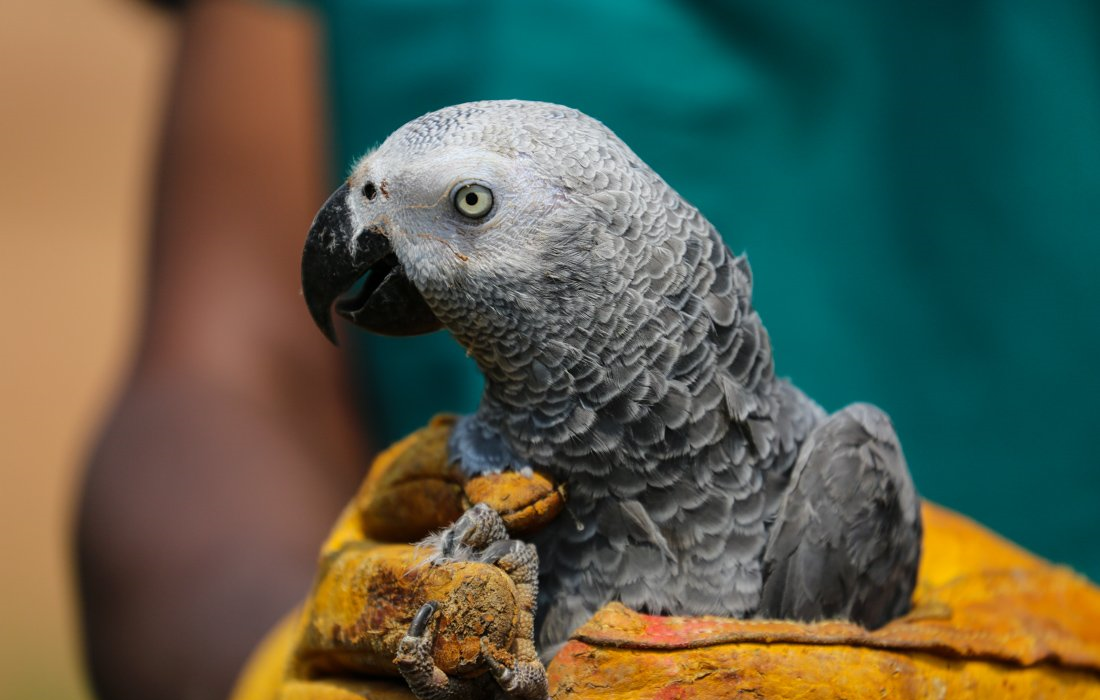
Wanting to know more, we found it useful to approach the DCN, which unfortunately could not answer our questions, on the pretext that this was a sensitive issue.
The future of grey parrots and also endangered Congolese fauna?
Since 1975, 1.3 million exports of specimens. According to CITES, 40 to 60% of parrots die before export. The actual number of parrots caught in the wild for international export would be between 2 and 3 million if mortality before export is counted as well as undeclared and illegal trade.
Today, we are talking about the illegal trafficking of the grey parrot, the lack of a scientific study determining the population of the species. But tomorrow, if nothing is done to correct the situation, what will happen to the other wildlife species in the DRC?
Be that as it may, all bodies at all levels (national and international) should each, within the limits of their competences, act in complete transparency, to avoid a certain unfortunate peril, if nothing is done to act in useful time and save African grey parrot species.
Because indeed, faced with such a threatened species as the grey parrot, there is no greater risk than staying still or being complacent in the exercise of its prerogatives.
African Grey Parrot Wild
SOURCE: Wildlife Conservation Society
African Grey for sale
Congo African Grey Parrot-The Illicit traffic in African grey parrot is reborn despite the ban
Should African Grey Parrots be protected from illegal trafficking?

